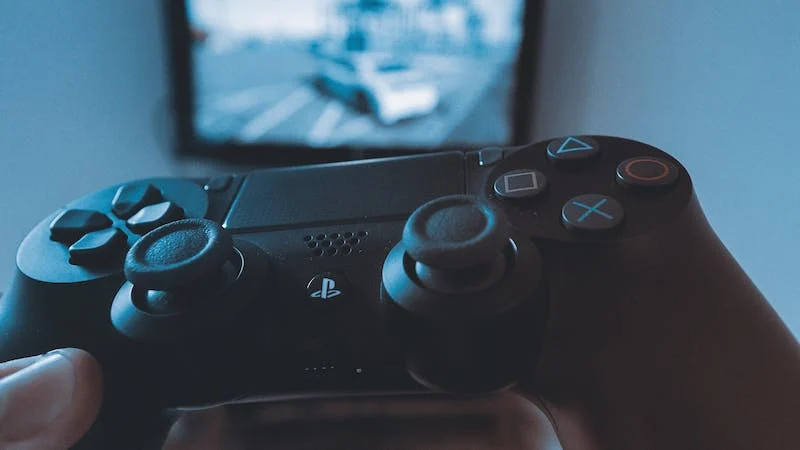Contents
Introduction
The gaming industry thrives on innovation, but in 2025, some of its biggest hits are rooted not in bold new ideas, but in revisiting the past. Remakes, reboots, and remasters of established franchises are dominating release schedules and sales charts. From polished remakes of 90s RPGs to reimagined versions of beloved action-adventure classics, game companies are betting heavily on nostalgia as both a creative and financial strategy.
Why? Because tapping into existing intellectual property (IP) carries far less risk than launching brand-new franchises. Familiar names attract older players with fond memories and new audiences curious to see what the hype was about. In an increasingly competitive market, nostalgia has become one of the industry’s most valuable assets.
For more on industry shifts, check out our coverage of Mobile Gaming Still Huge, with Evolving KPIs.
The Nostalgia Economy in Gaming
The rise of remakes and reboots isn’t unique to games—it echoes Hollywood’s obsession with sequels and reboots. But gaming’s nostalgia economy has a unique dimension: interactivity. Unlike films or music, games aren’t just experienced passively; they’re lived. Players spent hours mastering levels, solving puzzles, or grinding through dungeons. That investment creates deep emotional connections that can be reignited decades later.
When a publisher announces the return of a classic, it triggers a wave of sentiment: childhood memories, formative friendships, and countless hours of past play. It’s not just about playing a game—it’s about reliving a moment in time.
External resource: IGN’s analysis of remakes.
Why Companies Favor Remakes and Reboots
The strategy makes sense for publishers from a business perspective. Developing a new IP is expensive, with high marketing costs and uncertain returns. Reviving an old franchise, by contrast, comes with several advantages:
- Built-in Audience – Millions of fans already recognize the brand.
- Lower Risk – Familiar mechanics and proven concepts reduce uncertainty.
- Modern Technology Boost – Advances in graphics and gameplay can breathe new life into older designs.
- Cross-Generational Appeal – Older fans return, while new players discover classics for the first time.
The success of titles like Resident Evil 2 Remake, Final Fantasy VII Remake, and The Last of Us Part I has only reinforced the trend. These projects show that audiences are willing to pay for polished experiences—even if they’ve played the originals.
Remakes vs. Remasters vs. Reboots
It’s important to distinguish between the terms often used interchangeably:
- Remaster: A technical upgrade of an existing game, usually with higher resolution textures, better performance, or slight quality-of-life improvements. (The Legend of Zelda: Skyward Sword HD is a prime example.)
- Remake: A ground-up rebuild of the game, often retaining story and characters but reimagining gameplay with modern mechanics and visuals. (Resident Evil 4 Remake illustrates this approach.)
- Reboot: A fresh start for a franchise, sometimes keeping only core themes or characters while rewriting lore, gameplay, or tone. (Tomb Raider (2013) successfully rebooted Lara Croft for a new generation.)
Each approach has its place, and publishers decide based on the franchise’s age, relevance, and technological limitations.
Case Study: Final Fantasy VII Remake
Square Enix’s Final Fantasy VII Remake stands as a landmark example of nostalgia-driven design. The original 1997 PlayStation classic wasn’t just a game—it was a cultural event, introducing millions to Japanese RPGs. By rebuilding the game with modern graphics, voice acting, and real-time combat, Square Enix tapped into decades of goodwill.
The gamble paid off: the remake sold millions, spawned sequels, and reignited global enthusiasm for the franchise. Critics praised its ability to satisfy longtime fans while attracting new ones. This balance—honoring the past while innovating for the present—is the formula other companies now aim to replicate.
Player Psychology: Why Nostalgia Works
Nostalgia in gaming taps into several psychological factors:
- Comfort in the Familiar: Revisiting known stories or mechanics provides a sense of security.
- Social Connection: Multiplayer classics bring back memories of playing with friends or siblings.
- Completion of the Unfinished: Many players never finished tough childhood games. Remakes offer a chance at closure.
- Curiosity: New players want to experience legendary titles they’ve only heard about.
This mix of emotional attachment and curiosity ensures a ready-made audience for remakes and reboots.
Risks of Over-Reliance on Nostalgia
However, leaning too heavily on nostalgia isn’t without its downsides. Critics warn of potential stagnation if companies prioritize the past at the expense of innovation. Risks include:
- Creative Complacency: Fewer new ideas or experimental IPs.
- Player Fatigue: Oversaturation of remakes may dull their novelty.
- Failed Reimaginings: A poorly executed remake can tarnish a franchise’s reputation (Warcraft III: Reforged being a cautionary tale).
- Generational Disconnect: Nostalgia-driven games may alienate players with no emotional tie to the original.
Balancing nostalgia projects with innovative new titles remains a key challenge for publishers.
The Future of Remakes and Reboots
Looking ahead, the trend shows no signs of slowing. Publishers are actively mining their back catalogs for opportunities. Expect to see:
- Next-Gen Classics: Games from the 2000s and 2010s (such as Mass Effect, Bioshock, and Gears of War) entering the remake cycle.
- Cross-Media Synergy: Adaptations like HBO’s The Last of Us create demand for updated game versions.
- Player-Driven Demand: Social media campaigns and petitions increasingly influence which games get revived.
- Hybrid Approaches: Combining remakes with new storylines or expansions, blurring the line between nostalgia and innovation.
If executed well, these projects will continue to generate excitement and revenue. But the industry must ensure it doesn’t sacrifice originality in the process.
Conclusion
The surge of remakes, reboots, and nostalgia-driven projects reflects both a business strategy and a cultural phenomenon. For publishers, it’s a safer investment than launching risky new IPs. For players, it’s a chance to revisit formative experiences or finally play legendary games in modern form.
Nostalgia may be driving much of the industry’s present, but the future will depend on balance. Gamers want to relive the past—but they also crave the next big thing. The challenge for studios will be weaving both together, ensuring that gaming’s future is as bold as its storied past.



